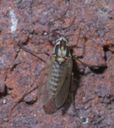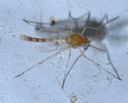Procladiini
Procladiini
Classification
- Phylum: Arthropoda
- Subphylum: Hexapoda
- Class: Insecta
- Order: Diptera
- Infraorder: Culicomorpha
- Family: Chironomidae
- Subfamily: Tanypodinae
- Tribe: Procladiini
Pronunciation
How to pronounce Procladiini: /prɔˈkla.diˌi.ni/
These audio files are automatically generated. While they are not always 100% accurate, they are a good starting point.
Images



Summary
Procladiini is a tribe of non-biting midges in the Chironomidae family, recognized for their unique larval features and distinct wing characteristics.
Physical Characteristics
Identified by high cubital ratio and long distance from M-Cu crossvein to fork in Cu.
Identification Tips
Look for distinct larval features, particularly the high cubital ratio in wing venation.
Habitat
Commonly found in various aquatic habitats, particularly in the Eastern USA and some in the Pacific Northwest.
Distribution
Eastern USA, few species found in the Pacific Northwest.
Diet
Larvae typically feed on organic detritus and algae found in their aquatic environments.
Life Cycle
Life cycle includes egg, larval, pupal, and adult stages, with aquatic larvae eventually transforming into adult midges.
Reproduction
Reproduction occurs through aquatic egg-laying by females, leading to larvae that develop submerged in water.
Predators
Larval stages are preyed upon by fish and other aquatic organisms.
Ecosystem Role
As both larvae and adults, they play an important role in aquatic ecosystems, particularly in nutrient cycling.
Collecting Methods
- Light traps
- Aquatic net sampling
- Dip nets
Preservation Methods
- Ethanol preservation
- Freeze preservation
Evolution
Former subtribe of Macropelopiini raised to tribe status due to distinct larval features.
Similar Taxa
Tags
- insect
- midge
- Culicomorpha
- Chironomidae
- Procladiini